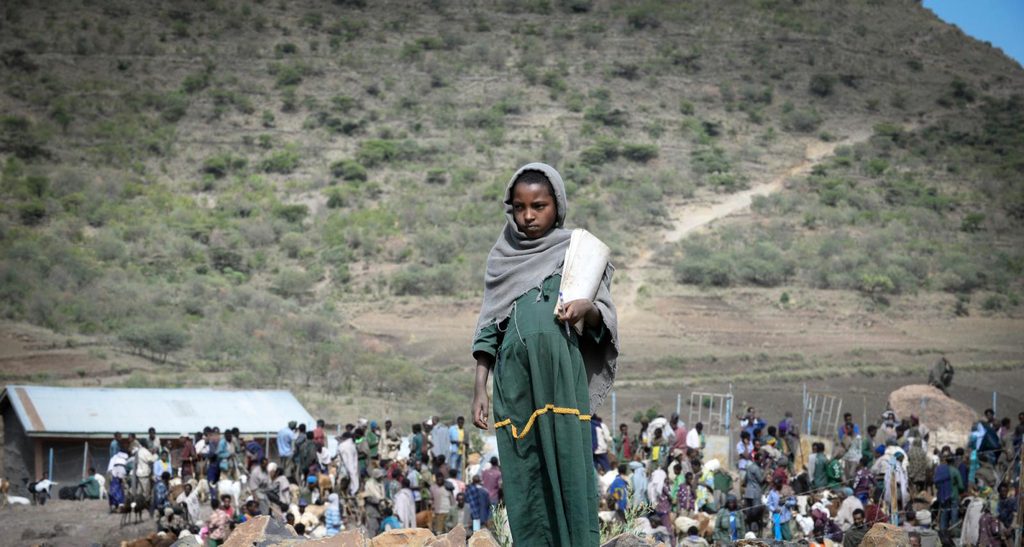These stories show how the inequalities experienced by marginalised girls and young women are amplified by the impacts of climate change.

1. Forced to drop out of school
Girls’ education is often the first thing families sacrifice when faced with the impacts of the climate crisis. Girls are pulled out of school to help their families find food and water or take care of siblings.
Dawele, 14, from Ethiopia was forced to drop out of school due to a drought.
“There is no rain in our community. We walk for more than 8 hours every day to get water,” she explains.
“Because of this, I couldn’t attend class and was forced to drop out. I love mathematics and want to be a teacher but now I don’t know what my future will be.”
Girls’ education is one of the most powerful strategies to combat climate change. For every additional year of schooling a girl receives, her country’s resilience to climate disasters improves. Increased investment in quality education for girls must be one of the highest priorities in climate action.
2. Child marriage
Child marriage is used by families to cope with economic hardships caused by climate change. This puts millions of girls at risk of sexual and physical abuse, early pregnancy and maternal death.
Following a food crisis in South Sudan, Yari got married at 16.
“I wasn’t ready to get married,” says Yari, now 18. “My mother told me that if I married then I would save the whole family from hunger and give my brothers the opportunity to marry too.”
3. Increased risk of violence
The impacts of climate change cause many people to migrate which puts girls’ safety at risk. These risks are worst when girls are collecting natural resources and when staying in temporary shelters.
In Cambodia, many people have been forced to move to find work due to the impact of climate change on peoples’ livelihoods.
Prey*, 8, has been living on her own since her older brother and sister moved away to find work.
“I miss her,” says Prey, talking about her sister. “Sometimes it’s scary to be home alone.”
Plan International Cambodia’s Chann Sophon says, “We’re very worried about Prey. She’s in great danger of being sexually abused or becoming a victim of human trafficking.”
4. Fewer opportunities to work
For millions of young women whose livelihoods are inextricably linked to natural resources, the consequences of climate change are felt daily.
Flora, 21, from Papua New Guinea, is a farmer. However, her home and income are increasingly being disrupted by climate change.
“We rely on growing coconut for money, but the trees are being washed away by sea level rise,” she says.
“I have experience of the weather’s impact on crops, but I don’t understand what is happening here.”
To meet global climate change targets, economies will have to become greener and sustainable. This provides an opportunity to advance climate justice and promote gender equality by challenging the stereotypes that limit opportunities for girls and women.
5. Health problems
During food shortages caused by climate change, girls are more likely to go hungry and will often eat least and last, leading to hunger and malnutrition.
Beauty, 13, is from a community in Zimbabwe that suffers from food shortages due to droughts. Despite the lack of food, she gets up at 4am to fetch water before walking 9km to school every day.
“I sometimes feel my bones aching. Some nights we go without food. After such nights, I cannot wake up to go to school, my body fails me,” says Beauty.
“It’s painful to be in school sometimes. I have sharp stomach pains.”
Governments must step up to support girls
All governments must acknowledge and address the increased risks faced by girls on the frontlines of the climate crisis.
Despite the impact on their lives, girls and young women are not included in political decision-making. This is preventing progress in the development of climate solutions and achieving sustainable development. The most marginalised must be able to participate so their specific needs are met in climate strategies.
*Name changed to protect identity
Categories: Emergencies


